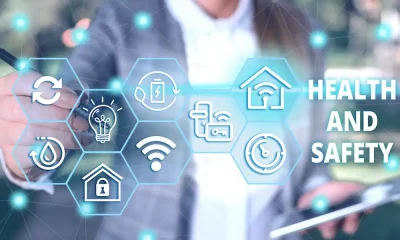Technology
Breaking Barriers: Telco Innovation At Its Finest

Some notable developments are happening in Telco innovation, including 5G deployment, edge computing, satellite connectivity, and more.
In this article, we look at where Telco technology innovation is headed and how it is expected to make a difference in connectivity and performance.
Telco Innovation
The telecommunications industry (Telco) is essentially overhauling everything, from how it operates to the tech it uses and the service it provides. This is not unique to Telcos, as you’d be hard-pressed to find an industry that doesn’t profess to be undergoing the same transformation.
Nonetheless, it’s an exciting industry that attracts top tech talent. Telcos need software developers, especially STEM graduates and electrical engineers. So where is the most Telco innovation required?
Connectivity – 5G, 6G
The rollout of 5G networks is a significant focus for telecom companies globally. 5G technology provides faster speeds, lower latency, and increased capacity, enabling innovations in various sectors such as IoT, augmented reality, and autonomous vehicles.
However, with 5G (fifth Generation of cellular networks) global coverage at nearly 50% in 2023 and two billion connections, it is forecasted to reach 75% by 2028; the focus has already moved to 6G.
TechTarget says 6G promises to offer even more capacity and lower latency.
Working with AI 6G will use signals at the high of the radio spectrum (RAN) to provide more intuitive connectivity, including location awareness, presence technology, and imaging.
If you think 6G is far off, it will be operational by 2032. As innovation never stops, 7G (7th Generation) wireless technologies are already being researched.
Open RAN (Radio Access Network)

Open RAN architecture is vital to delivering 6G and 7G. It disaggregates and standardizes RAN components, promoting interoperability and innovation in the telecom ecosystem. No propriety components here. With Open RAN, we can expect more customer choice due to market competition and improved connectivity and network performance.
However, Open RAN is not without risks. The very fact that it is ‘open’ creates security challenges. With a configuration different from the traditional RAN architecture of today, it’s perceived to be vulnerable to privacy and security issues. See this article on OpenRAN security challenges.
Edge Computing
Telecom operators have been exploring edge computing to reduce latency and improve the performance of applications. By processing data closer to the source, edge computing supports real-time applications and services.
Additionally, combined with 5G and future generations, edge computing can support cutting-edge technologies like advanced robotics, artificial intelligence (AI), autonomous technology, massive Internet of Things (IoT), and augmented and assisted reality (AR).
For example, Verizon explains how a provider can use telecom edge computing to build revenue streams.
Internet of Things (IoT)
IoT stands for the Internet of Things. It refers to a network of interconnected physical devices, vehicles, appliances, and other objects embedded with sensors, software, and network connectivity, allowing them to collect and exchange data. Integrating IoT technologies can enhance efficiency, reduce costs, and create new possibilities for innovation and improved services.
Telcos has been actively involved in expanding its IoT offerings. This includes providing connectivity solutions for various devices and industries, from smart cities and agriculture to healthcare and manufacturing.
For example, research confirms that supply chain, manufacturing, and transportation businesses plan to adopt more IoT, which presents a growing market for Telcos.
Cloud Services
Our article – Go Technology-Green With The Cloud explains how cloud computing has provided eco-friendly benefits and opportunities for businesses.
Telecom operators are increasingly partnering with cloud service providers or building their cloud infrastructure to offer services, including virtualized network functions, storage, and computing resources.
Cloud services enable the deployment of virtualized network functions (VNFs) on a flexible and cost-effective infrastructure.
Artificial Intelligence (AI) and Machine Learning (ML)
Telcos leverage AI and ML to optimize network performance, predict and prevent outages, and enhance customer experiences. In this LinkedIn article, the author explains how advanced AI applications are assisting Telcos in reducing customer support calls.
These technologies are also used for cybersecurity and fraud detection.
Cybersecurity
With the increasing connectivity and digitization, telecom operators strongly emphasize cybersecurity to protect their networks and customer data from evolving threats. New innovations using Open RAN will increase cybersecurity issues, as mentioned above.
Satellite Connectivity
In some regions, there’s a focus on satellite-based connectivity solutions to reach remote areas or provide backup options for terrestrial networks, which are traditional communication systems, i.e., Wi-Fi, cellular, and landlines.
Elon Musk’s Starlink is one example of a rapidly expanding satellite-based connectivity network. With its vast network of satellites in low Earth orbit, Starlink delivers lightning-fast internet connectivity to homes and businesses through small dishes on the ground and buildings.
Using satellite connectivity could generate significant revenue for Telcos in 5G and future generations.
Summing Up
The telecommunications industry is constantly innovating technology for several reasons, driven by the dynamic nature of the industry and the evolving needs of consumers and businesses.
Continuous technological innovation, including connectivity, IoT, AI, etc, allows Telco companies to enhance their services, improve network capabilities, and explore new business opportunities.






